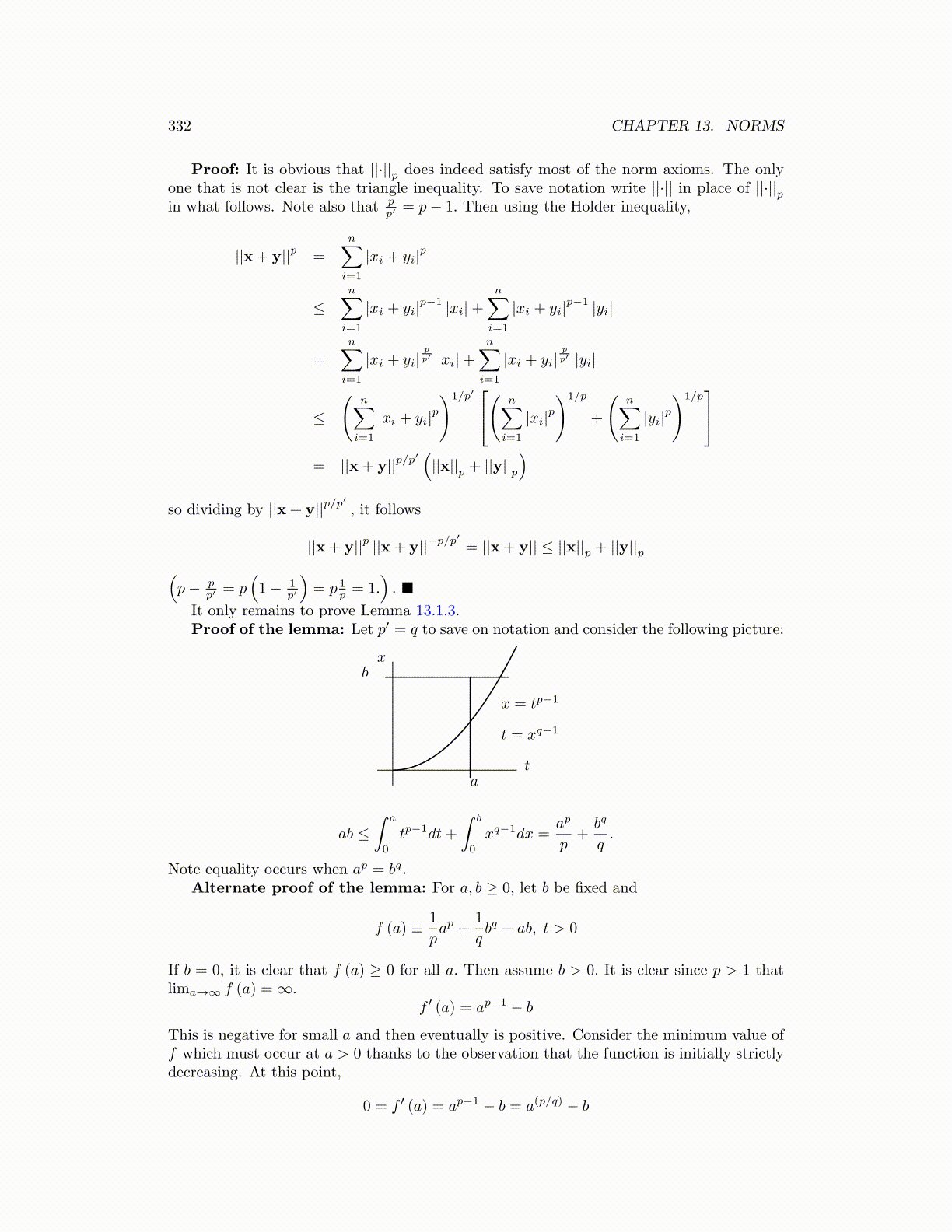
332 CHAPTER 13. NORMS
Proof: It is obvious that ||·||p does indeed satisfy most of the norm axioms. The onlyone that is not clear is the triangle inequality. To save notation write ||·|| in place of ||·||pin what follows. Note also that p
p′ = p− 1. Then using the Holder inequality,
||x+ y||p =
n∑i=1
|xi + yi|p
≤n∑
i=1
|xi + yi|p−1 |xi|+n∑
i=1
|xi + yi|p−1 |yi|
=
n∑i=1
|xi + yi|pp′ |xi|+
n∑i=1
|xi + yi|pp′ |yi|
≤
(n∑
i=1
|xi + yi|p)1/p′ ( n∑
i=1
|xi|p)1/p
+
(n∑
i=1
|yi|p)1/p
= ||x+ y||p/p
′ (||x||p + ||y||p
)so dividing by ||x+ y||p/p
′, it follows
||x+ y||p ||x+ y||−p/p′= ||x+ y|| ≤ ||x||p + ||y||p(
p− pp′ = p
(1− 1
p′
)= p 1
p = 1.). ■
It only remains to prove Lemma 13.1.3.Proof of the lemma: Let p′ = q to save on notation and consider the following picture:
b
a
x
t
x = tp−1
t = xq−1
ab ≤∫ a
0
tp−1dt+
∫ b
0
xq−1dx =ap
p+bq
q.
Note equality occurs when ap = bq.Alternate proof of the lemma: For a, b ≥ 0, let b be fixed and
f (a) ≡ 1
pap +
1
qbq − ab, t > 0
If b = 0, it is clear that f (a) ≥ 0 for all a. Then assume b > 0. It is clear since p > 1 thatlima→∞ f (a) = ∞.
f ′ (a) = ap−1 − b
This is negative for small a and then eventually is positive. Consider the minimum value off which must occur at a > 0 thanks to the observation that the function is initially strictlydecreasing. At this point,
0 = f ′ (a) = ap−1 − b = a(p/q) − b